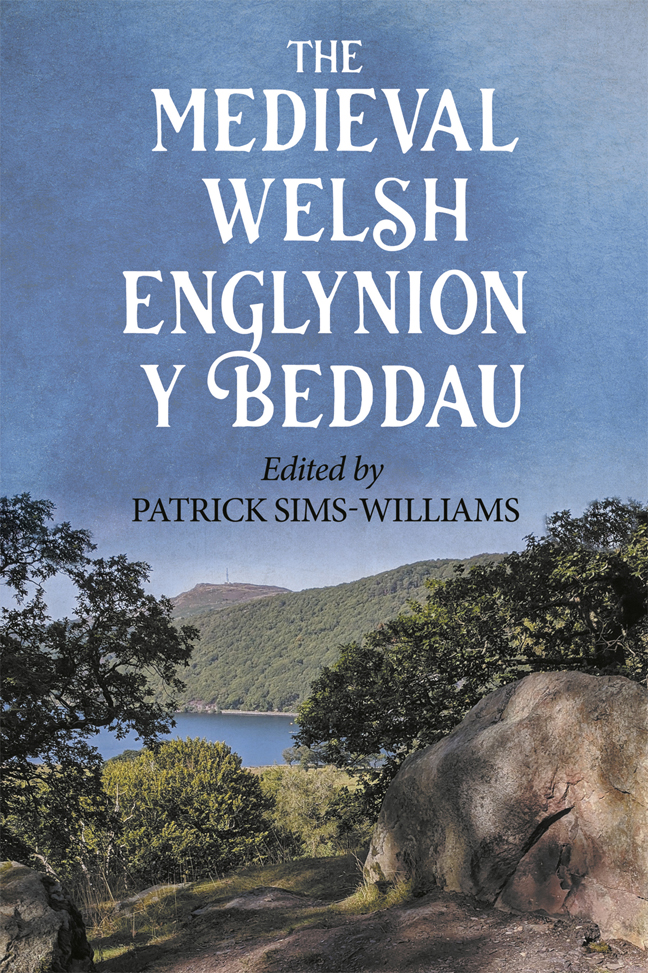 The Medieval Welsh Englynion y Beddau
The Medieval Welsh Englynion y Beddau 6 - Metrics
Published online by Cambridge University Press: 02 March 2024
Summary
John Rhys and Thomas Jones suggested many emendations in order to regularise syllable counts. Some of their emendations may be excessive, since variation may have been tolerated, as in the saga englynion analysed by Jenny Rowland, which have many stylistic similarities to Englynion y Beddau. That said, it is clear that the scribes sometimes disregarded metrics and tinkered with the texts in order to clarify their prose sense (e.g. I.35c and III.2c).
Nearly all the englynion in Englynion y Beddau are milwr or penfyr, the two three-line types already found in the Juvencus manuscript in the early tenth century. These were not used by the court poets of the twelfth century onwards – or, rather, not in the official poetry attributed to them by name. There are also some examples of four-line englynion, either the englyn gwastad (first attested in manuscript at Llanbadarn in the late eleventh century) or the englyn cyrch, which chiefly occurred in popular verse in the later Middle Ages. Four-line englynion of the more elaborate types used in the court poetry of the twelfth century onwards are absent, and the syllable counting and ornamentation is less strict than in that corpus.
Without ruling out a much earlier date, it seems reasonable to suppose that some parts of Englynion y Beddau were composed at least as early as the first half of the twelfth century. Once their format was established, however, one can imagine later poets adding further englynion in the same metres, as has been suggested in the case of the englynion referring to Norman kings in prophetic englynion such as the Cyfoesi. Metrics are therefore an unreliable dating guide. III.17, an englyn penfyr, is unlikely to be earlier than the fourteenth century (see commentary), but it does not stand out metrically.
Englynion milwr
Rowland shows that 7-7-8 and 8-7-7 were probably acceptable in englynion milwr as well as the canonical 7-7-7. In the Beddau there is one example (37) of 7-7-8, and although its 8 in line c could be reduced to 7 by deleting the optional adjective plural ending -ion, that is probably not mandatory.
- Type
- Chapter
- Information
- The Medieval Welsh Englynion y BeddauThe 'Stanzas of the Graves', or 'Graves of the Warriors of the Island of Britain', Attributed to Taliesin, pp. 110 - 114Publisher: Boydell & BrewerPrint publication year: 2023
